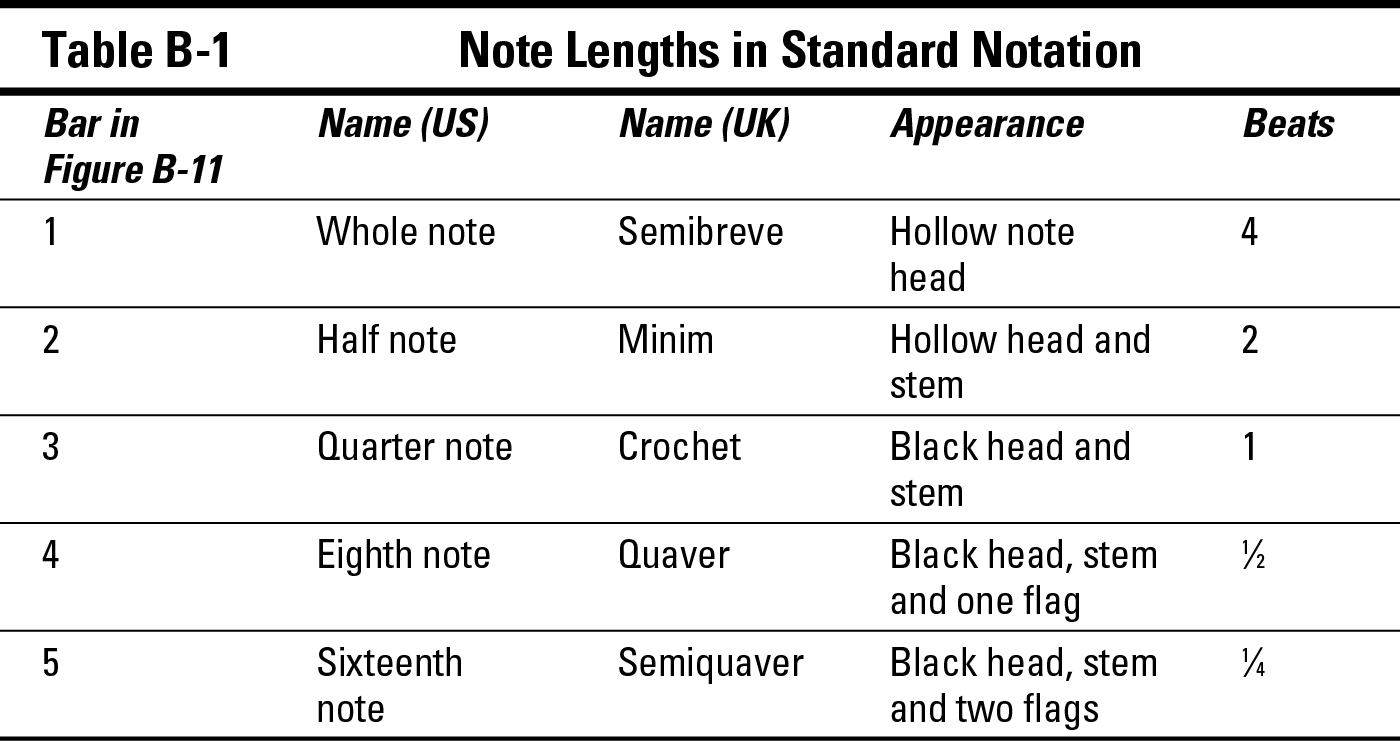Ukulele For Dummies (78 page)
Read Ukulele For Dummies Online
Authors: Alistair Wood

Figure B-8:
Notes on the E-string.

Figure B-9:
Notes on the C-string.

Figure B-10:
Notes on the g-string.

Reading Musical Rhythms
In standard notation each note comprises three elements:
 The head:
The head:
The oval part of the note, which can be fully black or hollow.
 The stem:
The stem:
A vertical line coming from the head, which can go up from the head or down (the stem positioning depends on the note's position on the stave and makes no difference to how you play the note).
 The flag:
The flag:
A horizontal line (or number of lines) coming off the stem at the opposite end to the head. Flags can connect to an adjacent note, where they are then called
beams
.
 The more beams or flags a note features, the shorter the duration.
The more beams or flags a note features, the shorter the duration.
Figure B-11 shows the notes you're most likely to come across and Table B-1 gives you a rundown of their names and values.
Figure B-11:
Note lengths in standard notation.


Tying notes together
A tie is an arch between two notes of the same pitch. When two notes are tied you play only the first note, but you hold it for the length of time of the two notes added together.
For example, the first note in Figure B-12 shows a quarter note tied to an eighth note. A quarter note lasts for one beat and an eighth note lasts for half a beat. So this note lasts for a beat and a half (that is, a count of â1 and 2').
Figure B-12:
Two tied notes followed by a quarter note.

The next note in the bar is an eighth note tied to a quarter note. This note also lasts for one and a half beats; the order that the notes come in doesn't matter when they're tied.
Dotting notes
Occasionally, you see a dot after notes in standard notation, such as in Figure B-13. The dots increase the length of the note by half as much again. So in Figure B-13 you have two quarter notes with dots after them. Half of a quarter note is an eighth note, and so a dotted quarter note lasts for a quarter note plus an eighth note; that is, one and a half beats.
 The result is that a dotted quarter note is exactly the same as a quarter note tied to an eighth note (as I describe in the preceding section). So you play the music in Figures B-13 and B-12 in exactly the same way.
The result is that a dotted quarter note is exactly the same as a quarter note tied to an eighth note (as I describe in the preceding section). So you play the music in Figures B-13 and B-12 in exactly the same way.
Figure B-13:
Two dotted quarter notes followed by a standard quarter note.
